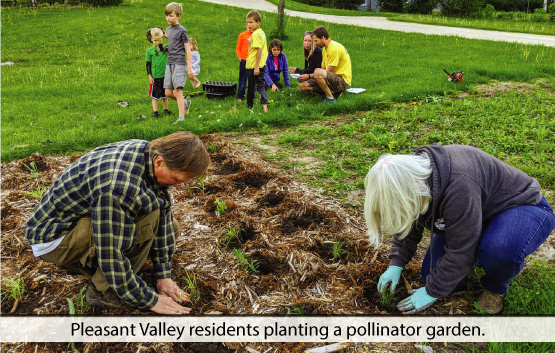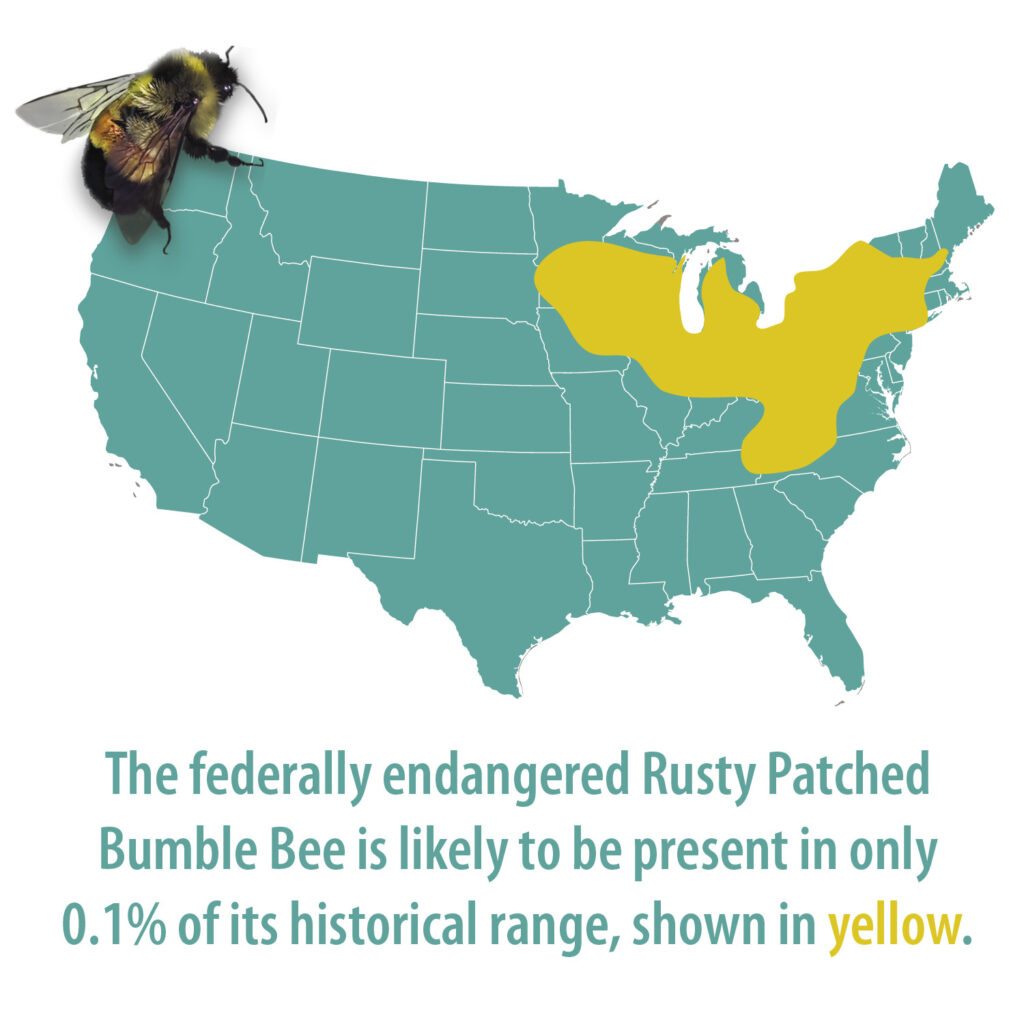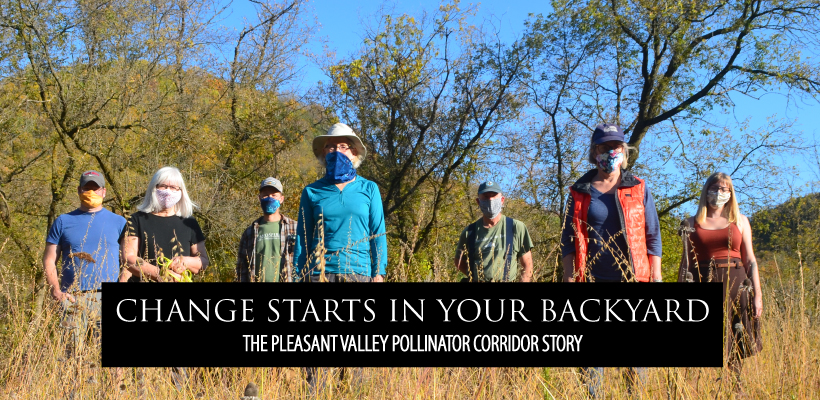With cooperation from grassroots activists, non-profit organizations, stage agencies, the University of Minnesota, and the legislature, a first-of-its kind grant program was created to incentivize habitat restoration in residential areas. The newly created “Lawns to Legumes” program set aside approximately $900,000 from the Minnesota Environment and Natural Resources Trust Fund to assist homeowners in the effort to install trees, wildflowers, and other native plantings on their properties.
The goal of the program is to protect at-risk pollinators including the Minnesota State Bee, the federally endangered Rusty Patched Bumble Bee. A once common species, the population of the Rusty Patched Bumble Bee has declined by nearly 90% in the last 20 years. It is likely to only be present in 0.1% of its native range at risk of extinction. This species faces the same threats that many other pollinators and wildlife face, including habitat loss, disease, pesticide use, and climate change.

Pleasant Valley in Winona, Minnesota was selected as a Demonstration Neighborhood in the Lawns to Legumes program. Lawns to Legumes Demonstration Neighborhoods establish community projects on residential properties intended to enhance pollinator habitat in key corridors, raise awareness for residential pollinator protection, and showcase best practices. A select group of homeowners will have 90% of their native plant project paid for with the grant – whether they are planting a single tree or restoring a large prairie. There is no minimum size requirement to participate in the program because even relatively small plantings of native flowers and grasses can help pollinators by building and connecting important habitat corridors.

The Pleasant Valley Pollinator Corridor connects the City of Winona to the forested bluff lands in the Pleasant Valley Watershed. This neighborhood is located in a biodiversity hotspot known as “The Driftless Region” which encompasses parts of SE Minnesota, SW Wisconsin, NE Iowa, and NW Illinois. This region contains the highest number of different plants and animal species in the Upper Midwest, as well as the highest percentage of species that are threatened or endangered in the Upper Midwest.
A team of dedicated locals has helped implement the program in Winona with the non-profit Healthy Lake Winona. These folks have been working throughout the pandemic to connect interested people with grant funds, and educate them about plant selection, installation, and maintenance. This group has also created partnerships with 9 other supporters, including the Winona County Soil and Water Conservation District, the U.S. Fish and Wildlife Service, and Prairie Moon Nursery. By participating in the grant programs, residents will help pollinators, create habitat, make connections, build community, and inspire change.
“If half of American lawns were replaced with native plants, we would create the equivalent of a 20 million acre national park, nine times bigger than Yellowstone or 100 times bigger than Shenandoah
National Park.”
– Doug Tallamy
The Minnesota Lawns to Legumes program is an inspirational model of bringing habitat restoration to residential areas. Together, we can create more programs like this across America, encouraging and incentivizing habitat restoration in neighborhood HOAs, local zoning ordinances, and grant programs.
As we understand more about our ecological interconnectedness, we have an opportunity to make choices that heal and regenerate the land. Each and every one of us has an important role to play in stewarding this land, and it starts right in your own backyard.
